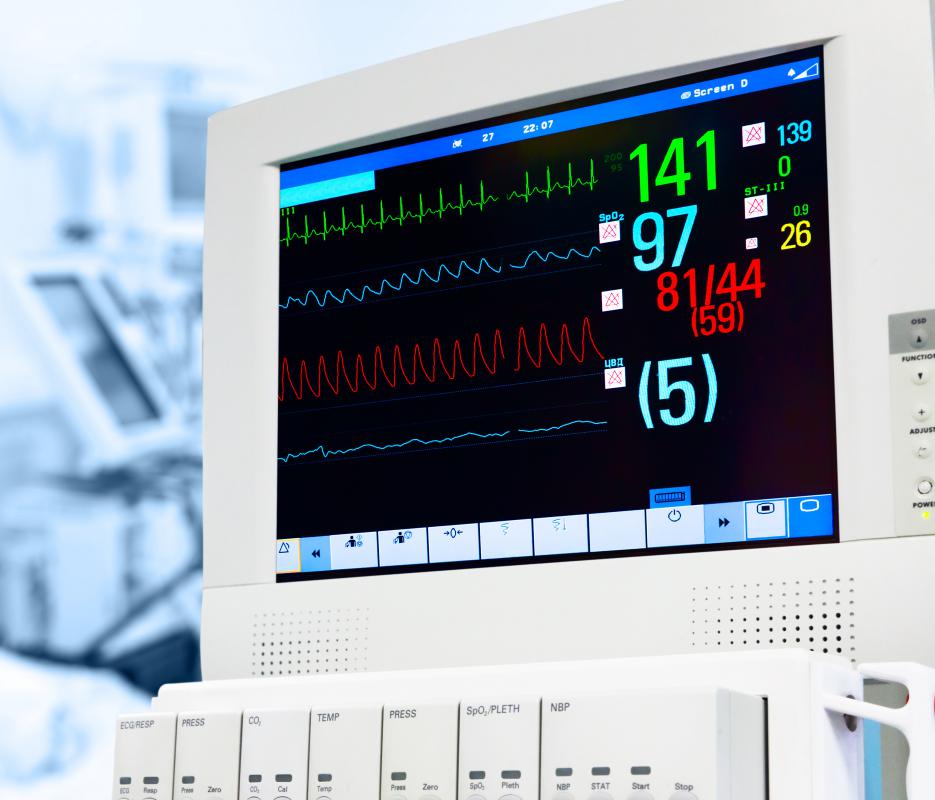At WiseGEEK, we're committed to delivering accurate, trustworthy information. Our expert-authored content is rigorously fact-checked and sourced from credible authorities. Discover how we uphold the highest standards in providing you with reliable knowledge.
What is Cardiac Ablation?
When abnormal heart rhythms occur, they can be the result of abnormal tissue or cell pathways that are conducting incorrect electrical signals to the heart, from within it. Sometimes the cause is not so clear, but many times conditions like supraventricular tachycardia, atrial flutter or atrial tachycardia, can be treated with a procedure called cardiac ablation. In this procedure, an electrophysiologist performs a cardiac catheterization that helps deliver radio frequencies to tissue creating the abnormal rhythm. This damages the tissue that it is creating the abnormal electrical pathway so it can no longer continue to send signals that create arrhythmias.
When cardiac ablation works, it can work very well to restore natural rhythm and prevent arrhythmias, but there are some inherent risks to the procedure. It is possible for the tip of the catheter and the radio frequency use to ruin normal heart rhythms in some cases. Some people who undergo this procedure will end up requiring a pacemaker if the heart no longer gets the signals it needs to beat normally. Other risks may include bleeding or bruising at the site where the catheter is inserted, which is usually in the groin or at the neck. Infection is also possible, though clearly all steps are taken to avoid this. Very rare complications can include stroke, if the catheter accidentally hits a blood clot and releases this into the blood stream, but this is extremely rare.

People who undergo cardiac ablation may or may not be fully conscious for the procedure. In children, doctors may prefer to use conscious sedation, since it is necessary for people to remain still as the catheter is threaded to the heart. Other people may be awake, or semi-awake. If a doctor prefers that patients be awake, they should be aware there is very little discomfort associated with a catheterization, but there may be a strong pressure sensation when cardiac tissue is actually ablated.

Usually, cardiac ablation takes a couple of hours to complete, but it can take up to four to six hours in total. Provided the procedure is considered effective, it may be conducted on an outpatient basis. Sometimes doctors may want to keep people in the hospital overnight so they can closely monitor rhythm, and period rhythm checks will be needed in the ensuing months to be certain that arrhythmias have been completely arrested.

People may be concerned about the ability for cardiac ablation to destroy heart tissue. The amount that is ablated is generally extremely tiny. It’s usually about .2 inches (.51 cm) at most. Statistics can range on general success of the procedure, which is another area of concern for most people. For conditions affecting atrial rhythm, the success rate of ablation is over 90%. It is less successful, though these numbers may be increasing, for the treatment of heart rhythms originating in the ventricles. Yet still, ventricular tachycardia may be successfully treated with cardiac ablation between 70-80% of the time, and is often now preferred as the first option, prior to considering other methods for regulating ventricular rhythm like surgical intervention or defibrillator implantation.
AS FEATURED ON:
AS FEATURED ON:















Discuss this Article
Post your comments